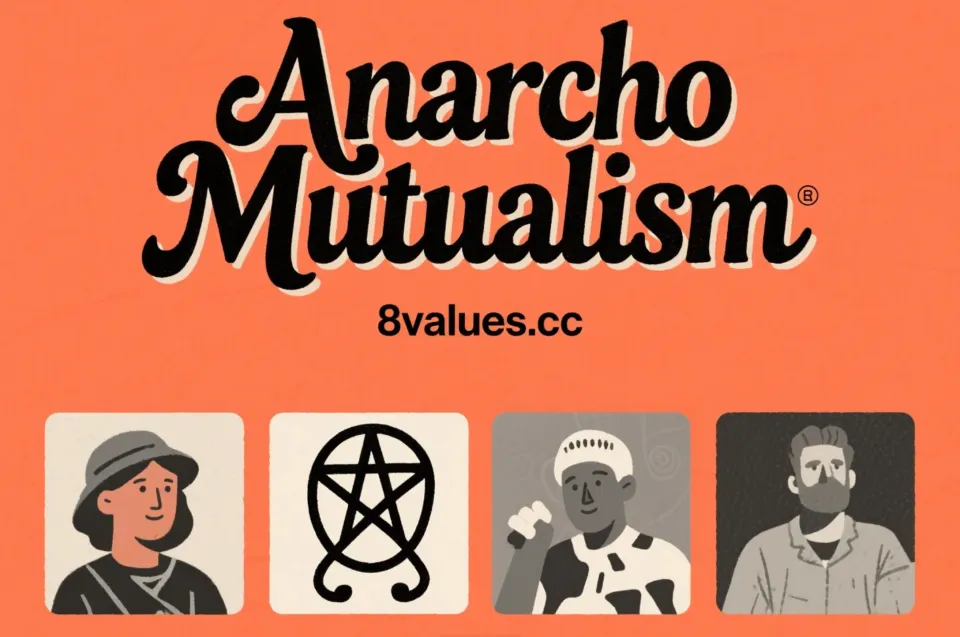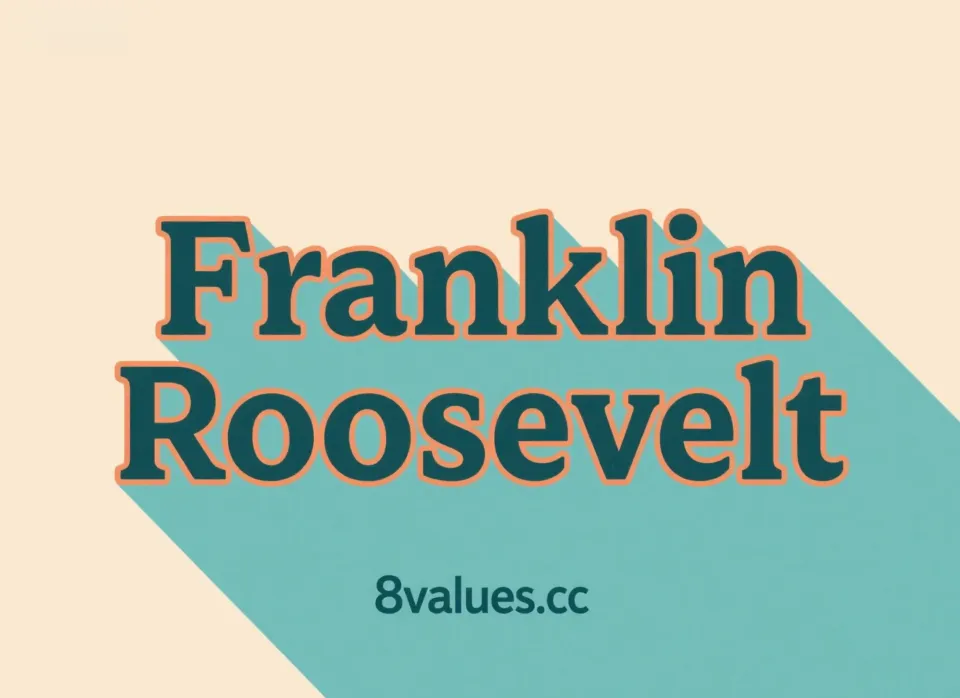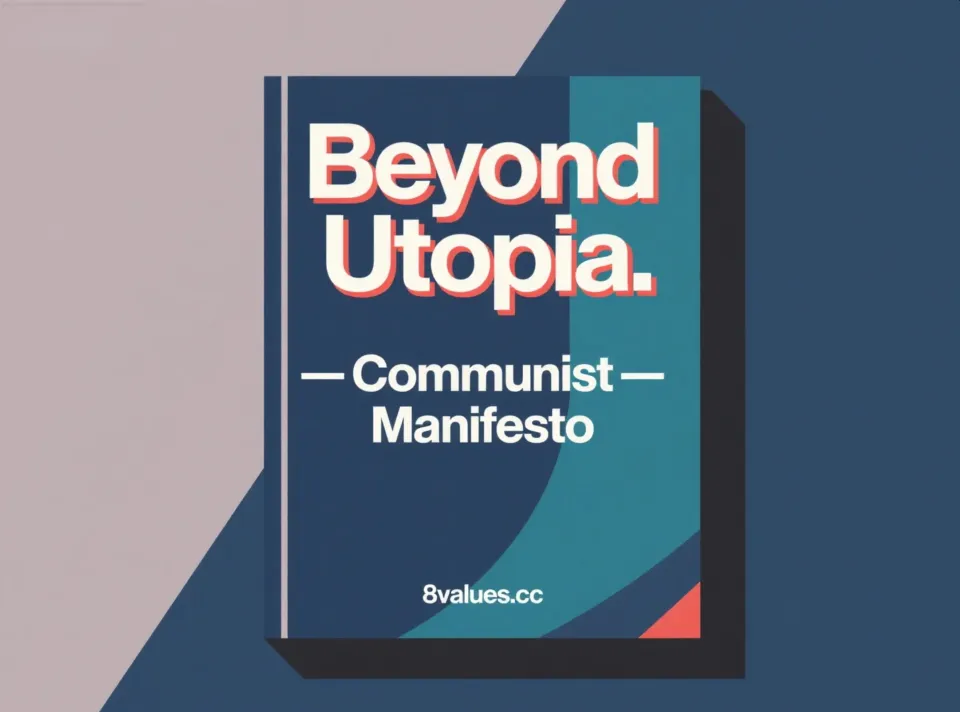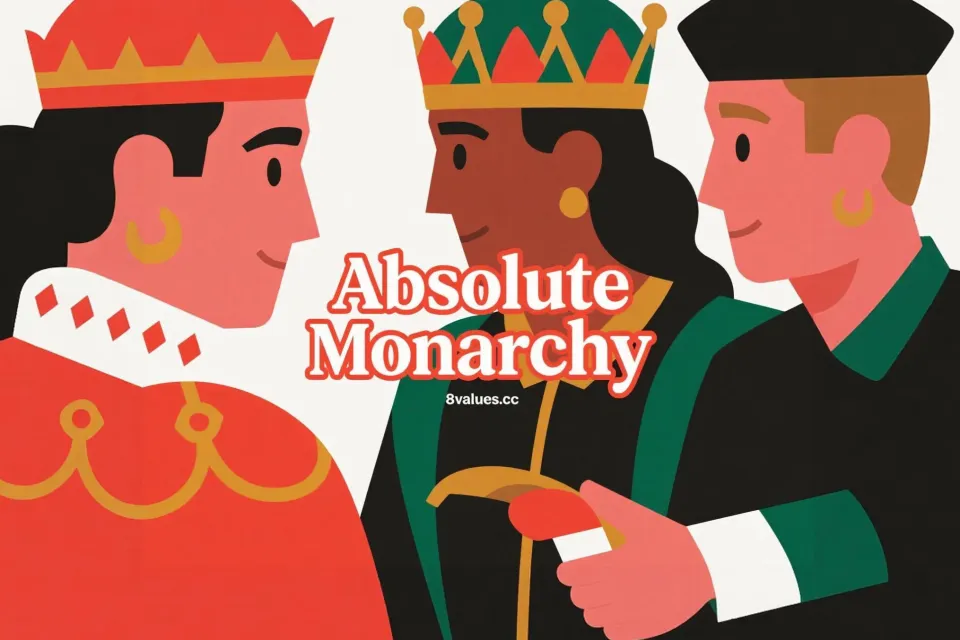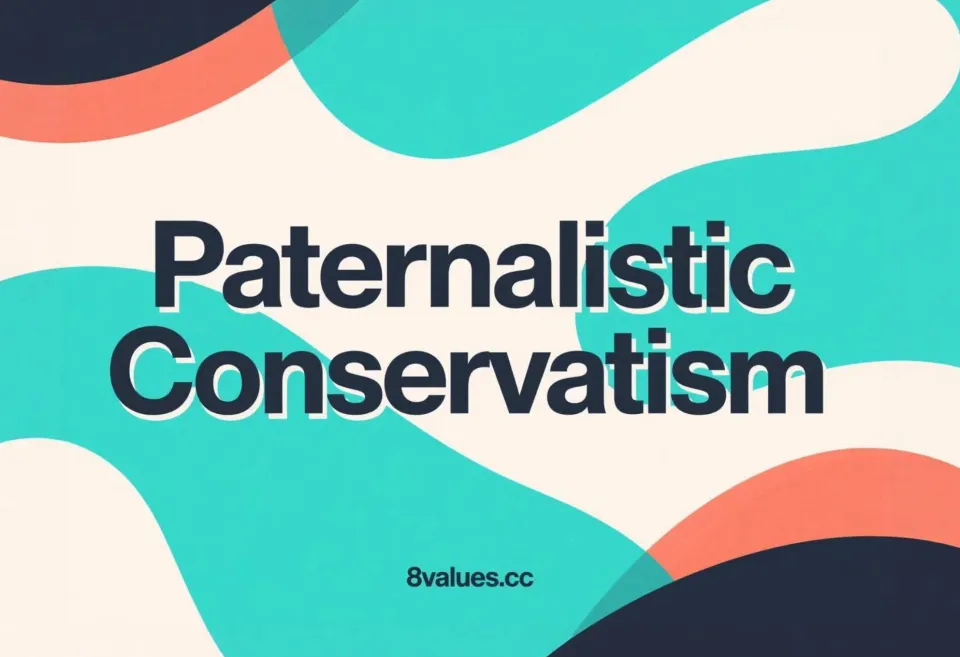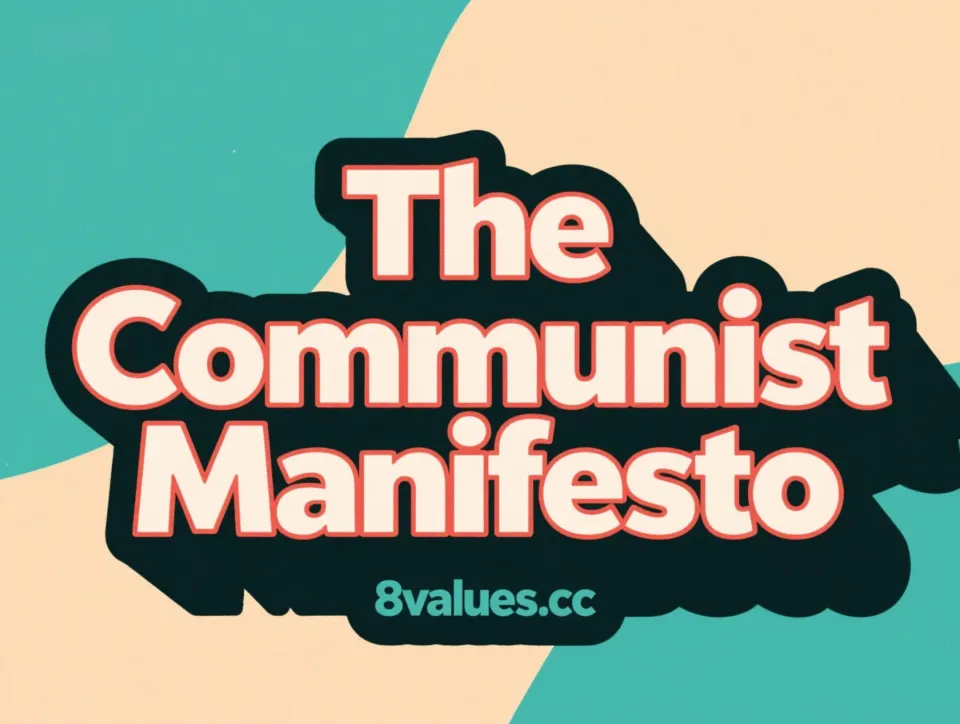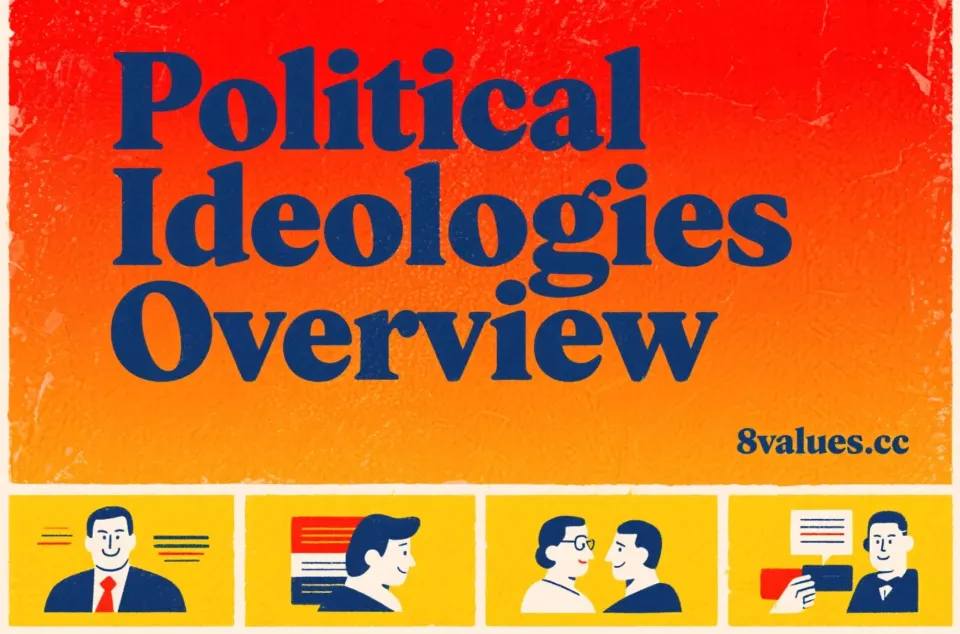Anarcho-Mutualism | 8values Interpretation of ideological ideology in political tests
A deep interpretation of anarchic mutual aidism, a left-wing liberalism that emphasizes free markets, mutual aid cooperation and non-compulsory social order. Understand its core ideas, historical development, economic model, its differences from traditional anarchism and capitalism, and its revelation in contemporary society. Want to explore your own political stance? You can try 8 values of political tests, which can help you better understand your position on the political spectrum.
Anarcho-Mutualism is an important branch of anarchist thought, pioneered by the 19th-century French thinker Pierre-Joseph Proudhon. It advocates the establishment of a stateless, non-hierarchical society and organizes socio-economic life through voluntary cooperation, free alliance and mutual assistance. As one of the earliest forms of anarchism to be systematically expounded, mutual aidism is called "anarchism" by Proudhon himself and is widely regarded as one of the most influential theorists of anarchism. It is often seen as a school of thought between individualistic anarchism and collective anarchism, combining certain forms of collective ownership and private property.
The core principles and definitions of anarchist mutual aid
The core concept of anarchist mutual aidism is to achieve social order through mutual assistance and cooperation rather than state coercion, and to criticize centralization and state monopoly violence. It is not a simple "anarchy", but what Proudhon calls "Anarchy is Order Without Power", emphasizing the dialectical unity between freedom and order.
Anti-authority and freedom union
Mutual aiders are firmly opposed to hierarchy and centralization, believing that both the state and large corporations have created systems of control and exploitation. The society they envision is a society where people freely reach cooperation agreements, individuals managing their own affairs and supporting each other through mutual assistance and credit. This idea is closely linked to the goal of anarchism without a ruler or compulsory institution. Proudhon believes that any authority, domination or sovereignty that is not chosen by an individual's own rationality and calculation should be abandoned.
The unique form of market socialism
Anarchy mutual aid is defined as a form of market socialism of free will. It supports a free market composed of independent handicraftsmen, small businesses and workers' cooperatives, but firmly opposes the large-scale concentration of wealth and power. It aims to create a system of self-employed workers and their cooperatives to exchange goods and services in a fair manner without interest, rent, profit, landlord or capitalist. This model contrasts with the exploitative nature of capitalism, because it fundamentally opposes capitalism's inherent concepts of exploitativeness such as capital aggregation, interest, monopoly, usury and wage slavery.
Difference between possession and ownership
On the issue of property, Proudhon put forward the famous statement that "property is theft". However, the "ownership" he criticized specifically refers to non-labor income from labor gains through exploitation of others, such as land rent, interest, profit and rent. In contrast, he proposed the concept of "possession", a form of non-exploited property based on personal labor and actual use, such as a house where an individual lives or a tool for work. Mutual aidians believe that everyone has the right to obtain products of their direct labor and to produce them through means of production controlled by individuals or collectively. The property of the workers' association is collectively owned by the association.
The economic operation mechanism of mutual assistance
Mutual aidism aims to achieve equity and efficiency without state intervention through a series of specific economic mechanisms.
Mutual Banking and Interest-Free Credit
Mutual credit banks are the core pillar of the mutual aid economic model. These banks will provide low-interest or interest-free loans to support individuals and workers in building businesses and engage in trade. The "People's Bank" or "exchange bank" conceived by Proudhon would be independent of the state, providing interest-free loans to industrial and agricultural producers, thereby freeing them from the exploitation of usury. This model aims to encourage entrepreneurship and raise wages by reducing borrowing costs, ensuring that most of the wealth is not concentrated in the hands of a few elites.
Labor Value Theory and Fair Price
Mutual aidism adopts the labour value theory, and believes that the value of a commodity should be determined by the labor time (including the contribution of land, innovation and labor) in the production of the commodity. Under such a system, workers should obtain the full value of their labour products in order to avoid capitalists' exploitation of labor. Proudhon argues that products and services in the market should be sold at "fair prices", i.e. prices that can be determined within the scope permitted by human calculations. This means that the transaction must be mutually beneficial and neither party can obtain improper benefits by exploiting the other party.
Workers' Cooperatives and Antitrust
Mutual aidism emphasizes the central role of workers’ cooperatives in the economy, where employees collectively own and manage their workplaces. This model guarantees democracy in the workplace and ensures that producers have ownership of the fruits of their labor. In order to prevent the formation of capitalist monopoly, mutual aidism opposes four main monopoly: currency monopoly, land monopoly, tariff monopoly and patent monopoly. By eliminating these monopolies, mutual aidism aims to create a truly free market that ensures fair competition and free trade.
Historical context: From Proudhon to contemporary echoes
The idea of anarchist mutual aid is not born out of thin air. It is closely related to the workers' movement in the 19th century and has left a deep mark in the course of history.
Founder and Early Development
Proudhon (1809-1865) is recognized as the founder of mutual aidism and the first person to call himself an "anarchist". His thoughts were deeply inspired by the "mutuellistes" of the French Lyons weaver workers in the 1830s, who pursued mutual assistance and self-management. Proudhon passed his book "What is property? 》 and "General Theory of the Revolution in the 19th Century", etc., systematically elaborate on the concept of mutual assistance.
The First International’s Route Struggle
Mutual aidism played an important role in the International Workers Association (First International) in the mid-19th century. However, a fundamental conflict of line broke out between mutual aidists and Marxists represented by Karl Marx in the future social form and path of realization. Anarchists advocate abolishing all states and authority, and destroying the state through social revolution and direct actions, while Marxists advocate seizing state power through the proletariat and establishing a transitional proletarian dictatorship. This disagreement led to the anarchists being expelled from First International in 1872.
The inheritance of American mutual aid
In the United States, Josiah Warren is considered the first American anarchist, and his concepts of "individual sovereignty" and "cost is a limit on price" formed the early foundations of American mutualism. Benjamin Tucker later introduced Proudhon's thoughts into the United States, developing American anarchism into a real movement. Tucker defines socialism as a struggle with usury, while anarchism as a struggle with authority, which he believes is not mutually exclusive, but overlaps with each other.
Comparison with other political ideologies
Anarchist mutual aid occupies a unique position in the anarchist spectrum, which makes it both relevant and distinct from many other genres. You can also examine the connections and differences between different schools of thought from a more macro perspective through political spectral coordinate analysis .
Anarchy mutual aid and anarchy communism
There are fundamental differences in the way the two are organized. Mutual aidism advocates "distribution by work", retaining the concept of market and currency, and allowing private property based on "occupation". Anarchical communism advocates "distribution on demand", completely abolishing wages and currency, and pursues the full public ownership of means of production and labor products. Communist anarchists believe that the market itself is an unfair hierarchy that creates injustice.
Anarchy mutual aid and anarchy capitalism
Although both oppose the state, there are irreconcilable contradictions in the concepts of property and market. Mutual aidism firmly opposes capitalist inherent characteristics such as capital accumulation, profit, interest, leasing and wage slavery. Anarchical capitalism, however, regards these as inevitable consequences of the free market and advocates the privatization and maintenance of all social services through the market. Mutual aid is left-wing liberalism, while anarchic capitalism is regarded as right-wing.
Anarchism mutual aid and collectivism/individualism anarchism
Proudhon described mutual aidism as a "synthesis" or "third form of social" of communism and private ownership, trying to find a balance between the "independence" of individualism and the "equality and law" of collectivism. It is different from individualistic anarchism, emphasizing the view of personal freedom and social equality as conceptual connections. At the same time, it is also different from collective anarchism, which emphasizes more on the collective ownership and collective power of means of production.
Implementation path and practical dilemma
Mutual aidism tends to be progressive and non-violent in its strategies to achieve social change, but its theory and practice also faces challenges.
Gradually improved and dual power
Most mutual aidists tend to promote social change through peaceful means rather than armed struggle. They advocate "dual power" and "counter economics" strategies. This means establishing alternative, state-independent or capitalist institutions (such as cooperatives, community energy, credit unions) in existing societies, gradually weakening the power of the old system and ultimately allowing the new society to naturally replace the old society. Some modern thinkers believe that mutual aidism can be an important short-term goal or transitional stage for highly capitalist countries (such as the United States).
Criticism and Challenge
Anarchy mutual aidism also faces severe criticism from different perspectives:
- Marxist criticism : Marx and Engels characterized Proudhon's mutual aidism as "petty-bourgeois political thought", believing that it only opposes interest without touching the root of wage labor, and attempts to solve the structural production relations problem through improved financial means.
- Market Intrinsic Problems : Critics point out that even in non-capitalist markets, market forces can lead to inequality, exploitation, environmental destruction, short-termism, and economic volatility. Market competition may erode social unity and may even cause mutual aid cooperatives to adopt anti-social and anti-ecological behaviors to survive.
- Human nature hypothesis : Mutual aidism has been criticized for its assumption that it is “too optimistic” about human nature. Critics believe that human beings cannot be completely autonomous and that society needs states to maintain order, resolve conflicts and provide public services.
Contemporary significance and future prospect
Although anarchy as an independent political movement has declined historically, its core ideas have received resounding in new forms in contemporary society, especially the era of digital economy.
Cooperative Movement and Community Practice
Modern workers' cooperatives, housing cooperatives and community mutual aid networks are all concrete practices of the principle of mutual aid at the micro level. These bottom-up, mutual assistance-based forms of organizations continue to develop globally, indicating that they remain important in resisting and transforming society. For example, some of the operating models of the Spanish Mondragon Cooperative were affected by mutual aidism.
Decentralized enlightenment of the digital age
Modern digital technologies, especially blockchain, point-to-point (P2P) networks and decentralized autonomous organizations (DAOs), are highly consistent with the decentralized and de-mediated concepts of mutual aidism in terms of technical architecture. They realize direct transactions and collaborative governance through distributed networks, which seem to provide new technological implementation paths for Proudhon’s “People’s Bank” and “Freedy Contract”. However, it is necessary to be wary of the possibility that these technologies may be exploited by capitalist logic and become new tools of exploitation and monopoly.
Response to existing difficulties
Voluntary alliances and non-compulsory governance emphasized by mutual aidism provide alternative solutions to the problems of crisis management, technical ethics and economic equity facing contemporary society. By reexamining its theoretical legacy, we can provide new solutions to building a more equitable and free society.
By understanding various ideologies such as anarchy, you can interpret the test results of 8values more deeply and understand the subtleties of different political ideas.
